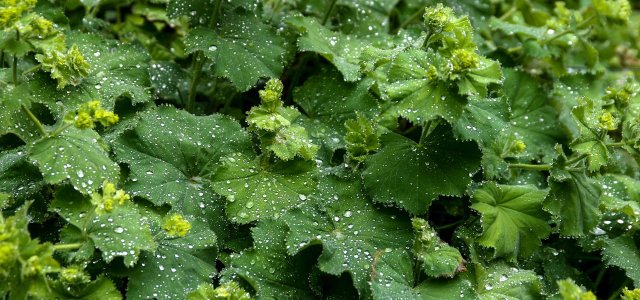
Ground covers in the garden are a decorative solution with botanical benefits for empty spaces. Here’s how to plant and maintain a lush carpet of plants.
Contents
Planting ground covers in the garden
In nature, barren, unvegetated soil is virtually non-existent. There is a botanical reason for this: low-growing plants of various species keep the soil shady and protect it from strong temperature changes. In addition, their widely branching roots ensure that the upper layers of soil remain loosened and enriched with nutritious humus.
In your garden, ground covers are not only a decorative solution for unused soil. With a green carpet of plants, you also enrich your garden soil with nutrients. A positive side effect is that, if well cared for and grown densely, ground cover plants also give weeds no chance.
Ground covers are particularly suitable for border areas and transitions in the garden. They are easier to maintain than a lawn and grow easily in shady areas, such as under trees and perennials. Many types of groundcovers are evergreens, so they provide a beautiful sight even in winter.
Among the most popular ground covers are:
- Hazelroot (Asarum europaeum).
- Caucasian forget-me-not (Brunnera macrophylla)
- Creeping spindle (Euonymus fortunei)
- Lungwort (Pulmonaria)
- Ivy (Hedera helix)
- Lady’s mantle (Alchemilla mollis)
- Carpet dogwood (Cornus canadensis)
- Fairy flowers (Epimedium)
- Brownelle (Prunella grandiflora)
- Hyssop (Hyssopus officinalis)
- Scented nettle (Agastache)
By the way, some groundcover plants also provide valuable food for bees and other beneficial insects. By planting bee-friendly groundcovers such as marshmallow, brown ale, hyssop, and fragrant nettle, you’ll be doing something directly to help preserve these endangered animals.
Plant ground cover

The ideal time to establish a carpet of plants is late summer. At this time, the growth of weeds slowly subsides and the young plants still have enough time until winter to develop roots in their new location.
Before planting, you should clean the selected area as thoroughly as possible from weed residues and old roots. To provide the young plants with nutrients right from the start, generously enrich the loosened soil with compost.
Now you can start planting. Depending on the type of ground cover you have, you should think about how many young plants you need for your area:
- Smaller species such as ysander or hazelwort grow relatively slowly. If you want to have a dense carpet of plants already in the first year, you can plant a good 20 to 25 plants per square meter. The disadvantage: In the fight for sunlight, the plants often get wedged together later on and, due to a lack of space, grow in places more in height than in width. This can quickly look chaotic and requires frequent pruning.
- It is therefore more gentle to give your young plants a little more time in the initial phase. If you plant about ten to 15 of the smaller ground covers per square meter, you can expect a densely overgrown, uniform area after two to three years.
- Rather fast-growing ground covers such as ivy can be planted even more sparingly. Here, about four to five young plants per square meter of soil are sufficient.
Ground cover care
To promote lush growth and numerous branches, you should cut back the young shoots of your freshly planted plants in the fall. Especially fast-growing ground covers such as ivy can be cut back by half at this time. The plants will thank you the following year with abundant branching and a dense form.
If your ground covers spread too much after a while and encroach on neighboring beds or lawns, you can also cut them back in the fall. With a spade you can easily cut off any stolons that are stepping over the edges.
Within the ground cover, however, hoeing or weeding is taboo. The complex root branches are often close to or above the soil surface. Should you catch an important root path with a hoe, entire areas may die in the worst case.
In the first two years, it is therefore best to carefully pull out any weeds that may appear with your hands. After two years at the latest, your ground covers will be robust and dense enough to prevent weeds from developing.

